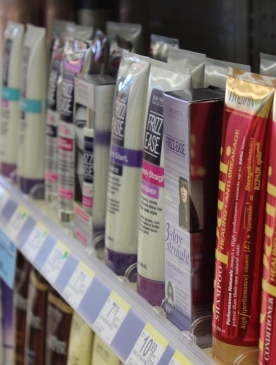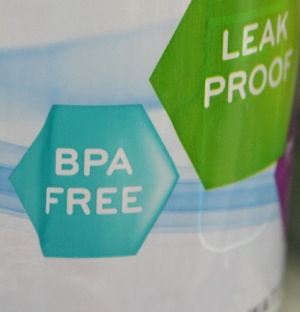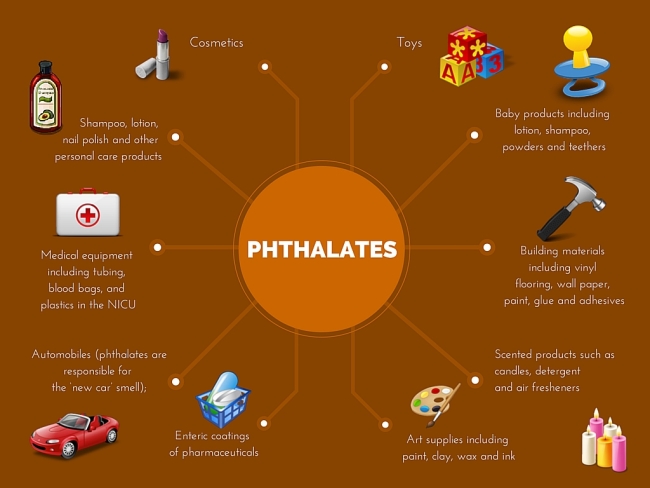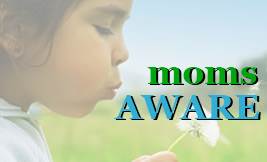Endocrine-Disrupting Chemicals Explored
 Chances are you've heard the term "endocrine disruptors." According to recent research, these substances are costing us billions of dollars per year in health care expenses (see the National Geographic article Chemical Exposure Linked to Billions in Health Care Costs). Generally present in small but pervasive quantities, these chemicals defy the conventional "the dose makes the poison" premise and are clearly wreaking havoc with our bodies.
Chances are you've heard the term "endocrine disruptors." According to recent research, these substances are costing us billions of dollars per year in health care expenses (see the National Geographic article Chemical Exposure Linked to Billions in Health Care Costs). Generally present in small but pervasive quantities, these chemicals defy the conventional "the dose makes the poison" premise and are clearly wreaking havoc with our bodies.
Endocrine-disrupting chemicals (EDCs) have been implicated in the following:
- Attention deficit disorder and other neurological effects
- Obesity
- Diabetes
- Male and female reproductive disorders
Endocrine Disruptors Defined
According to the Endocrine Society,
EDCs are defined as "an exogenous [non-natural] chemical, or mixture of chemicals, that interferes with any aspect of hormone action."
Hormones are natural chemicals produced within endocrine glands that perform a variety of critical functions in the body and play a key role when it comes not only to our quality of life but also to how we interact with the environment.
Types of Endocrine Disruptors
- Bisphenol A (BPA)
BPA was first synthesized in 1891. It was identified as an estrogen mimic in the early 1930s by British biochemist Charles Dodds. Dodds found BPA too weak to be effective clinically and went on to synthesize the synthetic estrogen DES. (Diethylstilbestrol, used to prevent miscarriage and premature labor, was prescribed to women for decades until a connection was made with certain cancers and pre-cancerous conditions.)
BPA was found to have other chemical properties making it useful as an industrial chemical and is now found in canned food, aluminum cans, store receipts, plastic tableware, plastic toys, food storage containers, some dental composites, and even medical equipment.
BPA is used as an additive, rather than an integral component of the material. This means it leaches easily from the product, especially when heat is applied or when certain acidic or basic conditions exist (often due to contact with various foods).
Like DES, BPA acts upon estrogen-sensitive tissues in the body. As of 2014, nearly 100 epidemiological studies had been published associating BPA with human health effects. Most of these effects concern reproduction, behavior, and metabolic balance. Like DES, these estrogenic effects are most damaging during fetal and infant development.
BPA is short-lived in the body, with a half-life as short as five hours. However, with constant exposure, BPA may accumulate faster than previously assumed. A 2011 study concludes,
When BPA is taken through the food, the active form may remain in the body for a longer period of time than when it is provided through a single treatment, which does not reflect the continuous exposure that occurs in animal and human populations.
 While many companies are now offering BPA-free products, recent research suggest that the "new" chemicals may be just as hazardous. (See the National Geographic article Chemical in BPA-Free Products Linked to Irregular Heartbeats.)
While many companies are now offering BPA-free products, recent research suggest that the "new" chemicals may be just as hazardous. (See the National Geographic article Chemical in BPA-Free Products Linked to Irregular Heartbeats.)The United States Food and Drug Administration has expressed concern over BPA, but currently contends that it is safe. The European Union and Canada have banned BPA in baby bottles. France has banned BPA from all food packaging.
- Phthalates
Phthalates are a complex class of chemicals which includes both high- and low-weight phthalates. Phthalates add softness and flexibility to otherwise hard and brittle plastics. They are used in virtually all polyvinyl chloride (PVC) products.
Phthalates are also found in perfumes, cosmetics, and shampoos as they help plastics and other substances retain their scent and color. You'll find phthalates in a variety of products, as illustrated below.

Like BPA, phthalates are not chemically bound to the product. Therefore, they are readily released into foods, liquids, or air via heat, humidity, or prolonged exposure. Also like BPA, phthalates are short-lived and water-soluble, which means that reducing or eliminating your exposure can have a profound positive effect.
There are a myriad of other classes of EDCs, including:
- Pesticides (DDT, chlorpyrifos, atrazine, 2,4-D, glyphosate)
- Brominated flame retardants (PBDEs)
See The Endocrine Disruption Exchange (TEDX) for an updated list of potential endocrine disruptors.
How Endocrine Disruptors Work
EDCs disrupt the endocrine system by mimicking or blocking a natural hormone. In the case of mimics, an EDC "tricks" the hormone's receptor into thinking the EDC is a hormone, which may inappropriately activate certain processes. As a hormone blocker, an EDC may bind to a hormone's receptor and block the activation of key processes in the body.
Because EDCs are not natural hormones, a single EDC can have multiple impacts on a variety of hormonal pathways. One type of EDC may disrupt two, three, or more endocrine functions.
In addition, there is now evidence that EDCs induce changes to germ cells—precursors to sperm and egg cells—which can potentially impact future generations. According to the Endocrine Society's document Introduction to Endocrine-Disrupting Chemicals (EDCs) – A Guide for Public Interest Organizations and Policy-Makers,
Children can inherit the negative consequences induced by the exposures of their ancestors. This is very important, because it underscores the point that the introduction of a chemical into the environment, if it affects the germ cells, will be inherited long after the chemical is cleaned up or breaks down.
What You Can Do
There is no need to wait for government or health organizations to take action regarding EDCs. While these chemicals are ubiquitous in our environment, many of them have short half-lives. This means reducing your exposure can offer immediate benefit by reducing your toxic burden. Consider the following suggestions:
- Reduce or eliminate plastic water bottles and replace with them with reusable glass or stainless steel water bottles
- Reduce the use of plastic food packaging
- Reduce or eliminate the use of fragranced beauty products (read labels carefully, as some fragrance-free products add chemicals to mask the smells)
- Choose organic when possible
- Avoid receipts (store them in an envelope if needed)
For more information and helpful resource links, see our articles Life with Less Plastic: 10 Simple Steps and Personal Care Products: Ingredient Awareness.
Global production of plastics grew from 50 million tons in the mid-1970s to nearly 300 million today. Endocrine-disrupting chemicals aren't going away anytime soon. In the meantime, why not be proactive and experience the rewards of a more natural lifestyle!

